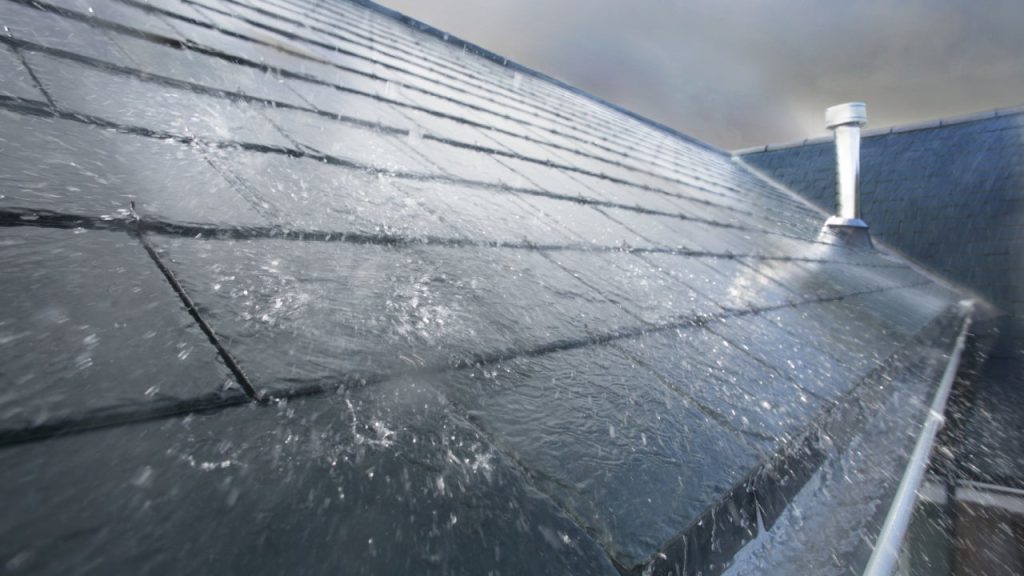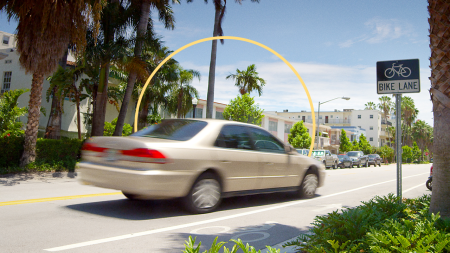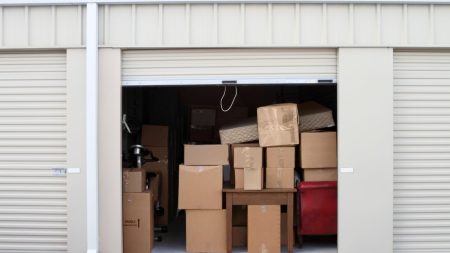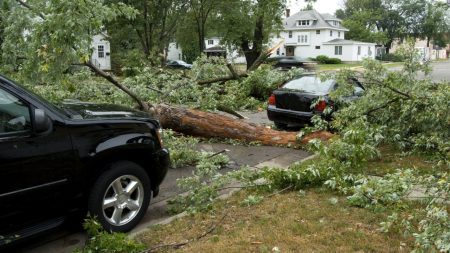Roofs are an integral part of your home; they keep you and your belongings shielded from weather and help protect the structure of your home from damage. They also tend to be quite expensive. Thankfully, homeowners insurance usually includes coverage for the roof, but how extensive that coverage is can vary significantly between policies. When filing a claim for a damaged roof, how much you receive will partly be based on whether your roof coverage is for actual cost value (ACV), replacement cost value (RCV) or guaranteed replacement cost value. Understanding the differences between these coverage levels is critical to knowing how much you might have to pay out of pocket when using home insurance to replace your roof.
What is roof insurance?
Homeowners insurance policies generally provide coverage for your roof under the dwelling coverage portion of your policy. Dwelling insurance pays to repair or replace the structure of your home after covered damage, but there are several different ways your roof might be covered. There are also situations where your roof may not be covered at all. If your roof is in poor condition due to lack of maintenance or wear and tear, for example, or if it is over a certain number of years old, your insurance company may exclude coverage for roof damage. How old a roof can be to qualify for coverage can vary between insurance companies and circumstances.
When you receive a quote from a possible insurer, the premium factors in the condition of your roof. It may also include discounts if you have a new or fortified roof, since these factors mean you are less likely to make a roof-based claim on your policy. Your policy details will state whether your roof is excluded from coverage, but you can also ask your insurance agent directly if your roof is covered and for which perils.
What is roof ACV?
Actual cash value or ACV roof coverage means that your insurance company agrees to pay you for the value of your roof at its depreciated value (prior to the damage). Depreciation is calculated by a claims adjuster, who will inspect the roof to determine its replacement cost, review its current condition and estimate its remaining lifespan.
For example, if the replacement cost — not the amount that you paid for it originally, but the amount it would cost to replace it today — for your roof is $20,000, but the roof loses 5 percent of its value each year (called depreciation), your roof would be worth $10,000 after 10 years. If you have ACV roof coverage, that is most likely the amount you would receive if you filed a claim, minus your deductible. Any costs over and above $10,000 would have to be paid on your own. There could also be additional depreciation taken out based on the condition of your roof. Some 10-year-old roofs might be in great condition, while others could have sustained damage or wear. In short, actual cash value roof insurance is designed to pay you the value of your roof based on the condition it was in just before sustaining whatever damage caused you to file a claim, and not the value of your roof when it was new. Some home insurers include an ACV depreciation schedule with the policy that shows what the replacement value is by year.
There is a connection between the age of your roof and your insurance coverage. ACV roof coverage is typically used for older roofs or roofs that are in poor condition, but some insurers only offer ACV coverage for roofs, regardless of age. Which coverage type is offered will vary by state regulations. It is typically a less expensive way to cover your roof. Some insurance policies may give you the option to choose between ACV or replacement cost value (RCV), but if your roof is past a certain age (generally 15 to 20 years old), your insurer may automatically stipulate that you have roof actual cash value coverage. Some states do not allow insurers to use ACV to assess roof replacement coverage. For that reason, checking local regulations when deciding on your roof insurance coverage can be a good idea.
What is the difference between ACV and replacement cost for roofs?
Replacement cost value coverage is a bit simpler to understand than actual cash value for roofs. If you have a homeowners policy that covers your roof on a replacement cost basis, the insurance company is agreeing to pay you what it would cost to replace your roof with a comparable new roof without factoring the roof’s age or prior condition. Your claims adjuster will base their assessment on new roofing materials (as well as labor costs) that are comparable to what you currently have and offer you a settlement for what it would cost to replace your roof with these materials.
RCV generally costs more than ACV coverage, but it typically means that your homeowners insurance deductible would be your only out-of-pocket expense if your roof is damaged. Because the payouts on RCV coverage tend to be higher than on ACV, the premiums are usually higher for this type of coverage. If your roof is newer or in good condition, you may be able to insure it with replacement cost. Some companies will automatically assign RCV to your roof based on its age, or you may be able to choose between ACV and RCV.
ACV vs. RCV for your roof
There are several factors to consider when deciding how to insure your roof. First, what options is your insurance company giving you? Based on the age of your home and your roof’s condition, your insurer may automatically assign a certain coverage type to your roof, taking the decision out of your hands. For example, an insurance company is not likely to cover a 40-year-old roof on a replacement cost basis, since the roof is probably in poor condition and may be more susceptible to damage. In hurricane-prone, tornado-prone and hail-prone states, property insurers may have stricter underwriting standards for roofs.
Pros and cons of ACV
If you’re given the choice between ACV vs. RCV for your roof, you will need to consider several aspects of your financial situation to determine coverage. Some of the key pros and cons of ACV coverage include:
ACV pros
- Usually yields a lower premium
- May be a more affordable option overall if your roof is fairly new
ACV cons
- Usually yields higher out-of-pocket costs after a covered loss
- Depreciation calculation may vary by insurance carrier
Pros and cons of RCV
RCV offers more robust coverage, but it might not be the right choice for every homeowner. Below are some key perks and drawbacks of RCV roof coverage:
RCV pros
- Likely to reduce your out-of-pocket costs after a covered loss, especially if your roof is older
- Accounts for real cost factors like inflation and supply chain surcharges
RCV cons
- Typically more expensive than ACV
- May not be available if you have an older roof
How roof upgrades impact insurance
Depending on the roof you have, there may be upgrades you can make to improve its durability and resilience. Details vary between insurers, but fortifying your roof can often result in lower premiums if you choose high-durability materials, wind resistance features or fire safety components.
Various materials can be used in roofing, with some offering greater protection than others. Part of this decision will depend on where your home is located and what type of perils it will likely face. For instance, a home in an area that often experiences hail storms may benefit from impact-resistant shingles, which are designed to handle impacts from objects like hail. Similarly, one could choose metal roofing options to gain a high level of durability, although the up-front cost can be significant.
Beyond the roof’s material and shingles, other design components can also impact your coverage and rates. Homeowners can sometimes improve their roofs by reducing the risk of leaks at crucial locations. For instance, adding more flashing and leak barriers around chimneys, skylights and vents sometimes results in better protection and lower rates. Installing roof tie-downs is also a cost-effective way to fortify your roof.
What are FORTIFIED roof standards?
The Institute for Business & Home Safety (IBHS) created a standard for roof construction based on extensive research to increase resilience and durability in the face of severe weather and the potentially damaging perils it represents. The fortified roof standard is not mandated, but it is a voluntary construction standard that contractors may use when constructing a roof. It’s worth asking a contractor if they use this standard before hiring them for the job.
The IBHS fortified roofing standard involves an increased focus on the attachments and sealings of the roof deck, as well as utilizing metal edging, high-impact materials and proper attic ventilation. Using these standards for your roof can result in better durability, long-term savings and potentially insurance premium discounts. Some states, such as Alabama, require insurers to provide discounts if roofs meet the IBHS fortified standard.
While this standard can be utilized when constructing a new roof, it may also be possible to upgrade your current one to the IBHS fortified roof standard. To find out, speak with a certified contractor and ask them if your roof can be upgraded to the fortified roof standard.
Frequently asked questions
-
-
Yes, roof insurance is included as part of most standard homeowners insurance policies under the dwelling component, which means your roof is generally covered. Common sources of roof damage include fire, wind, hail and certain types of water damage. However, specific perils can be excluded from your policy. For example, earthquake damage is commonly excluded. If your roof suffers damage in an earthquake, you’d likely need an earthquake endorsement or a separate policy to cover the damage.
Insurance policies also do not provide protection for general maintenance of roofs, such as wear and tear. If your roof is in poor condition or past a certain age, your insurance policy may not cover it at all. Talking to a licensed insurance professional is a good way to determine how, and if, your roof is covered.
-
In general, roof damage caused by wind is covered in homeowners insurance policies. For those who live in hurricane-prone states on the Atlantic and Gulf coasts, however, there may be a separate deductible that must be paid before the wind coverage kicks in. This is often anywhere between 1 and 5 percent of your property’s insured value. So, for example, if your property is insured for $300,000 and wind from a tropical storm damages the roof, you would need to pay $15,000 out of pocket before your insurance covers the rest if you have a 5 percent wind deductible. A separate wind and hail deductible may be included in policies in tornado-prone states as well.
-
Depending on your insurance provider, you may have the option to change your coverage from actual cash value to full replacement cost. However, this will depend on a variety of factors including the age and condition of your roof and your insurance provider’s policies. If your roof is 15 years or older or requires repairs, you may not be able to switch to a full replacement cost policy. If your roof is newer, your insurance provider might provide replacement cost by default.
-
Whether or not an old roof will be covered depends on the insurer. Many companies have restrictions in place on the age of roofs covered by their policies. For example, a lot of companies will restrict how roofs that are older than 15 to 20 years old are covered, and in many cases will only offer actual cash value coverage for an older roof. Most often, the insurance company will inspect the property and decide if they will insure the home and the roof. For example, if the roof is 15 years old and does not have significant damage, it is more likely to be covered by standard insurance. On the other hand, older roofs with damage due to old age may not be covered. If you have an older roof, it may benefit you to work with a licensed insurance professional who can get quotes from a variety of insurance companies and help you find affordable coverage.
-
In order to get insurance to pay for roof replacement, you will have to file a claim with your insurance company following a covered event. The insurance company will likely send an adjuster out to inspect the roof, at which point they will determine the extent of the damage and potentially approve the claim. The insurer will then determine what is covered by your insurance policy and allow you to either work with a preferred contractor or find one that you would like to hire.
-
Read the full article here
















